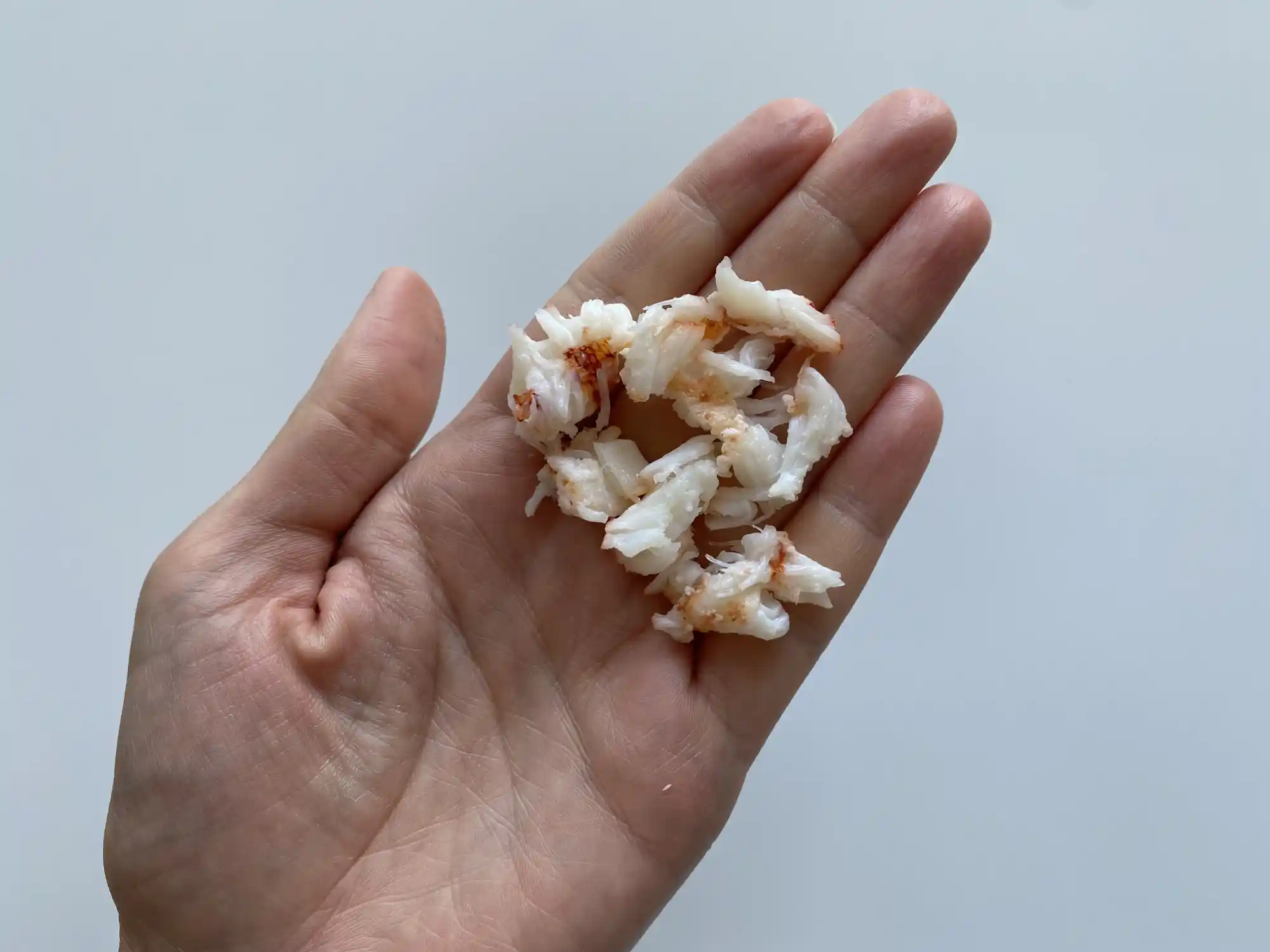Acceda a la base de datos First Foods® en Solid Starts App.
Leer másLangosta
Crustáceo
Sugerencia de edades
6 meses
Alto contenido de hierro
No
Alérgeno común
Sí

Warning
Cook lobster thoroughly before serving to babies. Lobster carries an elevated risk of foodborne illness, and babies are more at risk for severe symptoms.
When can babies have lobster?
¡Lo sentimos, esta página aún no está disponible en español! Estamos trabajando tan rápido como podemos para traducir todo nuestro contenido, gracias por tu paciencia y apoyo.
Lobster, when well-cooked, may be introduced as soon as baby is ready to start solids, which is generally around 6 months of age.
Lobsters are a family of crustacean shellfish that live in cold and warm waters worldwide. Their varied homes are reflected in the diverse names they are known by, including banagan, homard, hummer, and langosta, among many others. Cold-water species often make their home in cool regions of the Northern Atlantic, while warm-water varieties live in the Caribbean and Mediterranean Seas, as well as off the coast of warm regions of the Americas and East Asia.
How do you serve lobster to babies?
Cada bebé se desarrolla a su propio ritmo, y las sugerencias que ofrecemos sobre cómo cortar o preparar determinados alimentos son generalizaciones para una amplia audiencia.
6 months old +:
Serve cooked, finely chopped or shredded lobster meat, shell removed, mixed into soft, scoopable foods like mashed avocado, mayonnaise, or mashed vegetables or offer a lobster cake for baby to munch on, as long as it is larger than baby’s mouth, moist, and soft. Avoid serving any pieces of lobster that are still rounded to reduce choking risk.
9 months old +:
Offer cooked shreds of lobster meat, shell removed, on their own for the child to pick up with their developing pincer grasp, or mix finely chopped or shredded cooked lobster meat into scoopable foods like mashed avocado, mayonnaise, or mashed vegetables. Avoid serving any pieces of lobster meat that are still rounded to reduce choking risk. Continue serving large, moist, soft lobster cakes for practice taking bites from, or break one into bite-sized pieces, especially if baby tends to overstuff their mouth with food.
18 months old +:
Serve chopped cooked lobster meat, shell removed, or lobster cakes as desired. If you feel confident in a toddler’s listening and chewing skills, you can offer larger pieces of cooked lobster meat, such as parts of the claw. Make sure the lobster meat is tender, especially when offering larger pieces, and avoid serving the child firm or chewy crab meat, or cylindrical pieces of lobster meat, to reduce choking risk. Remember to create a safe eating environment, supervise closely, and encourage the toddler to take bites.
3 years old +:
Serve cooked lobster meat, shell removed, or lobster cakes as desired. Continue to make sure that the lobster meat is tender, especially when offering larger or cylindrical pieces of meat. At this age, many toddlers are ready to practice removing lobster meat from the shell with careful supervision and coaching from an adult.

¡Lo sentimos, esta página aún no está disponible en español! Estamos trabajando tan rápido como podemos para traducir todo nuestro contenido, gracias por tu paciencia y apoyo.
Videos
Is lobster a choking hazard for babies?
Yes. While lobster can be soft and tender, it can also be chewy, round, and slippery, which are qualities that can increase choking risk. To reduce the risk, ensure that the shell is fully removed, consider boiling or steaming the lobster to help the meat stay tender, and prepare and serve lobster in an age-appropriate way as described in the How to Serve section. As always, make sure you create a safe eating environment and stay within an arm’s reach of baby during meals.
Learn the signs of choking and gagging and more about choking first aid in our free guides, Infant Rescue and Toddler Rescue.
Is lobster a common allergen?
Yes. Lobster is a type of crustacean shellfish, which is classified as a common allergen by the World Health Organization. Individuals with lobster allergy are more likely to experience reactions to other shellfish in the crustacean shellfish family (crawfish, crab, shrimp, prawn) and, to a lesser degree, the mollusk shellfish family (clam, mussel, octopus, oyster, scallop, snail, squid) families. Interestingly, crustacean shellfish allergy commonly develops in adulthood, and for those who develop it in childhood, most will not outgrow it. If you suspect baby may be allergic to shellfish, consult an allergist before introducing lobster.
Being allergic to shellfish doesn’t mean that an individual will also have a finned fish allergy, as they are not closely related. However, you may need to be careful about the risk of shellfish proteins cross contaminating finned fish and other seafood, as they are often prepared in the same facilities using shared tools and cooking materials.
Some lobster may be preserved with sulfites. While sulfites are not a common allergen, certain individuals, particularly those with asthma, can have allergy-like reactions to added sulfites. If sulfites are a concern, avoid ingredients such as sulfur dioxide, potassium bisulfate, potassium metabisulfite, sodium bisulfite, sodium metabisulfite, and sodium sulfite to name a few.
As you would do with all new allergens, introduce lobster by serving a small quantity at first, and watch closely for signs of any adverse reaction. If all goes well, gradually increase the quantity over future meals.
Once successfully introduced into the diet, common food allergens like crustacean shellfish should be ingested regularly (at least once weekly, if possible) throughout the toddler years. However, as the crustacean shellfish are closely related, it is not necessary to serve each different variety of shellfish separately - simply serve what is most accessible to you locally.
Is lobster healthy for babies?
Yes. Lobster offers protein and omega-3 fatty acids, as well as calcium, choline, magnesium, potassium, selenium, zinc, and vitamins B6 and B12. Together, these nutrients support baby’s growth, development, bone density, brain function, electrolyte balance, taste perception, metabolism, immunity, and more.

Does lobster contain mercury?
Lobster can contain low to moderate amounts of mercury, depending on where it lived. Mercury is a heavy metal that is present in most fish and shellfish to varying degrees and, when consumed in excess, can negatively impact a child’s neurodevelopment. To minimize baby’s exposure to mercury from fish and shellfish, serve as part of a balanced diet over time.
Is lobster high in sodium?
It can be, but it depends on the variety, brand, and preparation style. While lobster can be high in sodium, the amount of sodium that babies eat tends to be low as they learn the skills to feed themselves, and some sodium is important for supporting baby’s electrolyte balance, hydration, and movement.
When can babies eat lobster tomalley?
There is no age at which eating lobster tomalley is without risk, so whether or when to serve it is a personal decision for which you must calculate risk. The hepatopancreatic organ, also known as lobster paste or tomalley, tends to accumulate whatever toxins or contaminants that exist in the lobster’s environment, so many health advisory groups strongly recommend that people of all ages avoid consuming this organ. If where you live offers more specific guidance for when adults and children can eat lobster tomalley based on conditions specific to that region, feel free to defer to those recommendations.
When can babies have raw lobster?
There is no age at which eating raw lobster is without risk, so whether or when to serve it is a personal decision for which you must make an informed decision in the context of your child. Raw lobster poses a high risk of foodborne illness, with more risk of severe symptoms in babies. Cooking shellfish like lobster to an internal temperature of 145 F (63 C) helps to kill concerning bacteria in the food.
Nuestro equipo
Escrito por
Consejos de expertos directo a tu bandeja de entrada
¡Suscríbete y recibe correos semanales con recetas, consejos y más!
Copyright © 2025 • Solid Starts Inc







